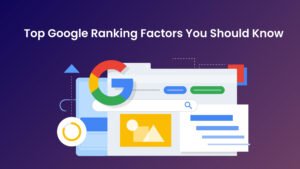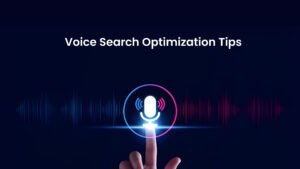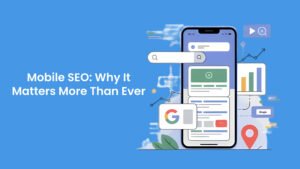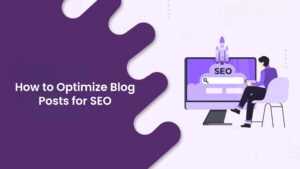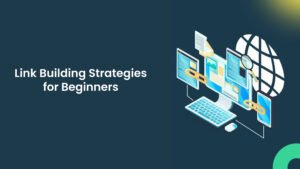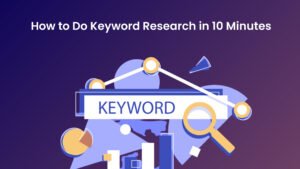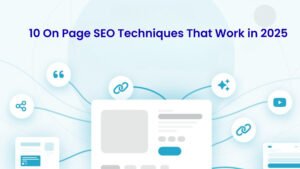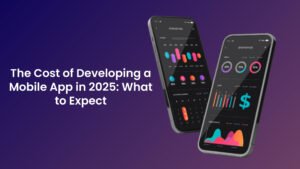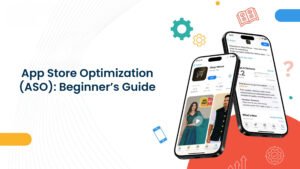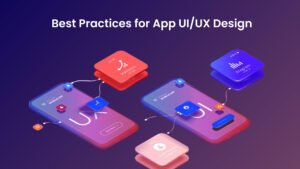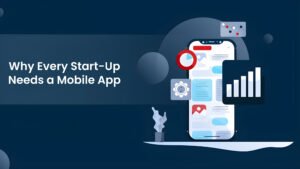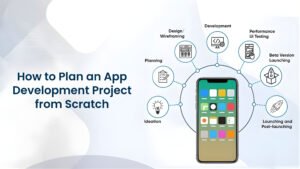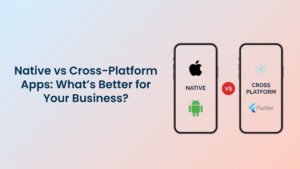Introduction: Why AI is Transforming Marketing Today
Marketing has always been about understanding people and delivering the right message at the right time. Yet, in the fast-paced digital landscape, traditional methods are struggling to keep up. Brands face challenges in accurately predicting customer behavior, managing campaigns efficiently, and ensuring every marketing dollar drives measurable return. This is where AI in marketing has emerged as a game-changer.
Artificial intelligence is no longer a futuristic concept; it is a practical tool businesses can leverage today to improve ROI, automate repetitive tasks, and generate actionable insights. From AI advertising that optimizes campaigns in real time to AI customer insights that reveal hidden trends in consumer behavior, AI marketing tools are helping brands make smarter decisions faster.
Consider this: recent studies indicate that companies integrating AI in marketing see an average ROI increase of 30 to 50 percent within the first year. For decision-makers and business leaders, this is more than just efficiency, it is a competitive advantage. Marketing automation AI enables brands to nurture leads seamlessly, while predictive analytics ensures campaigns reach the right audience with the right message.
In this article, we will explore the pain points of traditional marketing, examine how AI tools are transforming strategy, provide actionable implementation steps, and share real-world case studies. By the end, you will understand how AI in marketing can drive measurable growth and position your brand ahead of competitors in an increasingly data-driven world.
Understanding the Pain Points in Traditional Marketing
Even the most experienced marketing teams face limitations when relying on traditional methods. Despite years of expertise and strategic planning, businesses often struggle to convert leads efficiently, gain deep customer insights, and make timely decisions. Let’s break down the key pain points and understand why AI in marketing has become essential.
Inefficient Campaign Management
Manual campaign management consumes enormous time and resources. Marketers often rely on spreadsheets, static reports, and gut instinct to plan, execute, and optimize campaigns. This approach leads to overspending on underperforming ads, inconsistent targeting, and delayed adjustments.
For example, a company running a multi-channel campaign manually might spend 20 hours per week optimizing ads without seeing significant ROI. By contrast, AI advertising tools automatically analyze real-time performance data and adjust targeting and bids, freeing teams to focus on strategy rather than manual optimization.
Table 1: Comparison of Campaign ROI – Traditional vs AI-Powered Approach
| Metric | Traditional Campaign | AI-Powered Campaign | Improvement |
|---|---|---|---|
| Weekly Hours Spent | 20 | 5 | 75% less time |
| Cost per Lead | $45 | $30 | 33% lower |
| Conversion Rate | 2.5% | 4% | 60% higher |
| ROI | 1.2x | 1.8x | 50% increase |
Limited Customer Insights
Understanding customer behavior is central to marketing success. Traditional methods, however, provide fragmented data. Surveys, CRM logs, and purchase history often fail to capture the full picture, resulting in generic campaigns that do not resonate with audiences.
AI customer insights overcome this limitation by aggregating data from multiple sources, analyzing behavioral patterns, and predicting future actions. This allows brands to deliver personalized experiences that significantly increase engagement and conversion.
Slow Decision-Making
Manual data analysis slows down strategy adjustments, creating missed opportunities. Marketing teams may notice a drop in performance only after weeks of reporting, by which time competitors have already captured potential leads.
Marketing automation AI addresses this problem by providing real-time dashboards, predictive alerts, and automated optimization. Decisions that once took days now happen in hours or even minutes, ensuring campaigns remain relevant and efficient.
How AI Marketing Tools Revolutionize Business Strategies
Brands that adopt AI in marketing are no longer guessing what will work. They have access to precise insights, automated workflows, and tools that continuously optimize campaigns for maximum ROI. Let’s explore how AI marketing tools are transforming business strategies.
Marketing Automation AI
Marketing automation AI refers to platforms and software that streamline repetitive marketing tasks while ensuring campaigns remain personalized and effective. These tools handle everything from lead nurturing to email sequencing and social media scheduling, saving teams hours each week.
For example, a B2B software company using marketing automation AI can send targeted emails based on user behavior, track engagement in real time, and adjust messaging automatically. This not only improves efficiency but also increases lead conversion rates.
Table 2: Impact of Marketing Automation AI
| Metric | Before AI | After AI | Improvement |
|---|---|---|---|
| Weekly Hours on Campaigns | 25 | 8 | 68% reduction |
| Lead Conversion Rate | 12% | 20% | 67% increase |
| Email Open Rate | 18% | 35% | 94% increase |
| Revenue per Campaign | $15,000 | $25,000 | 67% increase |
AI Customer Insights
Customer understanding is no longer limited to demographics or purchase history. AI customer insights use machine learning and predictive analytics to identify patterns, forecast behavior, and segment audiences with incredible precision.
A retail brand, for instance, might discover through AI analytics that a specific segment responds strongly to personalized discounts sent on Friday evenings. Using this insight, the brand can optimize campaigns to deliver the right offer at the right time, improving both engagement and revenue.
AI Advertising
AI advertising leverages machine learning to optimize digital ad campaigns across channels such as Google, Facebook, and programmatic platforms. Instead of relying on manual bid adjustments, marketers use AI algorithms that continuously evaluate performance and automatically adjust targeting, creatives, and bids.
Consider an e-commerce brand running retargeting campaigns. By integrating AI advertising tools, the brand sees higher click-through rates and lower customer acquisition costs compared to traditional methods.
Table 3: AI Advertising vs Traditional Advertising Metrics
| Metric | Traditional | AI-Powered | Improvement |
|---|---|---|---|
| Click-Through Rate | 1.8% | 3.2% | 78% increase |
| Cost per Acquisition | $50 | $32 | 36% lower |
| Conversion Rate | 2.2% | 4.1% | 86% higher |
| ROI | 1.1x | 1.9x | 73% increase |
AI marketing tools do more than automate tasks, they empower brands with actionable insights, personalized strategies, and measurable results. By combining marketing automation AI, AI customer insights, and AI advertising, businesses can drive higher ROI while reducing time and costs.
Implementing AI in Marketing: Step-by-Step Guide
Adopting AI in marketing is not just about buying tools—it is about integrating technology into strategy, data, and operations. For decision-makers, understanding how to implement AI effectively is crucial for achieving measurable ROI. Here is a practical step-by-step guide.
Identify Objectives and KPIs
Before implementing AI marketing tools, define clear objectives. Whether the goal is increasing lead conversion, reducing customer acquisition costs, or improving campaign efficiency, having measurable KPIs ensures AI investments deliver value.
-
Examples of AI-driven KPIs:
-
Increase conversion rate by 25 percent in six months
-
Reduce cost per acquisition by 30 percent
-
Improve customer retention by 15 percent
-
Choose the Right AI Marketing Tools
Not all AI tools are created equal. Selecting tools that align with business goals, technical capability, and budget is essential. Here is a comparison of popular AI marketing tools and their strengths:
Table 4: Top AI Marketing Tools Comparison
| Tool | Key Features | Best For | Estimated ROI Impact |
|---|---|---|---|
| HubSpot AI | Marketing automation, predictive lead scoring, email personalization | B2B & SMB | +30% conversion rate |
| Salesforce Einstein | AI-driven analytics, customer insights, predictive engagement | Enterprise | +25% campaign efficiency |
| Albert.ai | Programmatic advertising, real-time optimization | Digital advertisers | +40% CTR & ROI |
| ChatGPT for Marketing | Content generation, social media automation | SMEs & content teams | +20% content output efficiency |
| Hootsuite AI | Social media scheduling, audience insights | SMB & mid-market | +15% engagement rate |
Data Integration and Management
AI thrives on high-quality data. Structured and clean datasets from CRM systems, email platforms, social media, and website analytics are necessary for AI models to produce accurate predictions.
-
Tips for successful data integration:
-
Consolidate customer data across touchpoints
-
Use CRM platforms compatible with AI tools
-
Regularly audit data for accuracy and completeness
-
Campaign Execution and Optimization
Once tools are integrated and data is ready, launch AI-powered campaigns with continuous monitoring. AI marketing tools offer real-time performance dashboards, predictive alerts, and automatic adjustments, enabling marketers to optimize campaigns dynamically.
-
Example: An e-commerce brand uses AI advertising for retargeting. By continuously analyzing user behavior, the system adjusts ad spend in real time, increasing conversion rates by 25 percent within three months.
Continuous Learning and Improvement
AI marketing is not a one-time implementation. Algorithms improve as they process more data. Regularly review outcomes, refine objectives, and adjust campaigns to ensure maximum ROI.
-
Key practices:
-
Test multiple AI-driven campaigns to identify high-performing strategies
-
Use A/B testing to validate AI recommendations
-
Track both short-term metrics (CTR, engagement) and long-term metrics (LTV, revenue growth)
-
Real-World Case Studies
To understand the tangible impact of AI in marketing, let’s explore how leading brands have successfully implemented AI tools to enhance their marketing strategies.
1. Klarna – Streamlining Marketing Operations with Generative AI
Company Overview:
Klarna is a global fintech company offering buy-now-pay-later services and other payment solutions.
AI Implementation:
Klarna integrated generative AI tools, including Midjourney, DALL-E, and Adobe Firefly, to automate the creation of marketing visuals. This approach allowed for rapid production of tailored images for various retail events.
Results:
-
Reduced image production costs by $6 million annually.
-
Accelerated image development cycle from six weeks to seven days.
-
Generated over 1,000 unique images in the first quarter of 2024.
-
Saved $4 million by decreasing reliance on external marketing suppliers.
-
Achieved a 37% reduction in the sales and marketing budget while increasing campaign volume.
Source: Reuters
2. IBM – Enhancing Engagement with AI-Generated Content
Company Overview:
IBM is a multinational technology company known for its innovations in AI and enterprise solutions.
AI Implementation:
IBM utilized Adobe’s Firefly, an AI image generator, to create personalized marketing materials at scale.
Results:
-
Produced 200 images with over 1,000 variations during a pilot test.
-
Achieved 26 times higher engagement compared to traditional campaigns.
-
Enabled more personalized marketing efforts, freeing up creative teams for strategic tasks.
Source: Axios
3. The Original Tamale Company – Going Viral with AI-Assisted Content
Company Overview:
The Original Tamale Company is a family-owned eatery in Pacoima, Los Angeles, specializing in traditional tamales.
AI Implementation:
The marketing team used ChatGPT to script a humorous 46-second social media video, which was then produced quickly using generative AI tools.
Results:
-
The video garnered over 22 million views and 1.2 million likes.
-
Attracted engagement from celebrities and significantly increased online visibility.
-
Boosted customer traffic and brand recognition through viral content.
Source: Business Insider
Measuring ROI of AI in Marketing
Adopting AI in marketing is only effective if businesses can measure its impact accurately. For leaders and decision-makers, understanding the return on investment helps justify AI spending and guides future strategy. Measuring ROI involves tracking the right metrics, identifying challenges, and interpreting results in context.
Key Metrics to Track
AI marketing tools can generate an overwhelming amount of data. The key is to focus on metrics that directly relate to business goals and ROI:
-
Conversion Rate: Measures how effectively AI-driven campaigns turn leads into customers. Improvements in personalization, timing, and targeting often drive higher conversions.
-
Click-Through Rate (CTR): Evaluates engagement with online ads, emails, or content. AI advertising tools optimize creatives and targeting to improve CTR.
-
Customer Acquisition Cost (CAC): Tracks how much it costs to acquire a new customer. AI marketing tools can reduce CAC by targeting high-value prospects more efficiently.
-
Customer Lifetime Value (LTV): Predicts the long-term revenue potential of a customer. AI customer insights can help increase LTV through personalized recommendations and retention strategies.
-
Revenue Growth: Tracks incremental revenue generated from AI-driven campaigns.
Table 8: Sample Metrics Before and After AI Implementation
| Metric | Pre-AI | Post-AI | Improvement |
|---|---|---|---|
| Conversion Rate | 3% | 5% | 66% increase |
| CTR | 1.8% | 3.2% | 78% increase |
| CAC | $45 | $30 | 33% reduction |
| Customer Lifetime Value | $200 | $260 | 30% increase |
| Revenue per Campaign | $12,000 | $19,000 | 58% increase |
These metrics provide a clear picture of AI’s effectiveness and demonstrate tangible business value to stakeholders.
Challenges and Considerations
While AI can improve ROI, companies need to navigate certain challenges:
-
Data Quality: Poor or fragmented data can lead to inaccurate AI predictions. Ensuring clean, structured, and integrated data is critical.
-
Tool Selection: Choosing the right AI marketing tools for specific business needs is essential. Not all tools are optimized for every industry or campaign type.
-
Integration Complexity: AI systems must align with existing CRM, analytics, and marketing platforms to work effectively.
-
Overreliance on Automation: AI provides recommendations, but human oversight is necessary to ensure alignment with brand strategy and creativity.
Best Practices for Measuring ROI
-
Establish baseline metrics before implementing AI tools.
-
Use A/B testing to compare AI-driven campaigns with traditional campaigns.
-
Regularly review dashboards and reports to identify trends and opportunities.
-
Adjust AI algorithms and strategies based on performance insights.
By measuring ROI accurately, business leaders can make informed decisions, optimize budgets, and continuously improve marketing performance.
Future of AI in Marketing
AI in marketing is no longer a futuristic concept—it is evolving rapidly and shaping the strategies that will dominate the next decade. For business leaders, understanding emerging trends and anticipating the future of AI-driven marketing is essential to stay competitive.
AI-Generated Content and Creative Automation
One of the most significant trends is AI-generated content. From personalized emails to social media posts, blogs, and ad creatives, AI can produce high-quality content at scale. Brands like IBM and Klarna are already leveraging generative AI to accelerate content creation, reducing production time while maintaining brand consistency.
Creative automation allows marketers to test multiple versions of campaigns quickly, delivering highly personalized messages without extensive manual effort. This approach not only improves engagement but also drives measurable ROI by optimizing every touchpoint.
Conversational AI and Hyper-Personalization
Conversational AI, including chatbots and virtual assistants, is enabling real-time, personalized interactions with customers. By analyzing historical data and predicting behavior, AI can offer personalized recommendations, resolve queries instantly, and even guide purchase decisions.
Hyper-personalization takes this a step further by tailoring experiences to individual preferences. Retailers, for example, can use AI to recommend products based on browsing history, location, and purchase patterns, significantly increasing conversion rates and customer loyalty.
Predictive Analytics and Real-Time Optimization
Predictive analytics continues to evolve, allowing brands to anticipate customer needs and adjust campaigns proactively. AI tools can identify patterns that humans may miss, such as shifts in buying behavior, emerging trends, or churn risks.
Real-time optimization ensures marketing efforts remain dynamic. For instance, programmatic advertising platforms now adjust bids, creatives, and targeting in real time, maximizing efficiency and ROI. Brands that adopt this approach gain a competitive edge in highly saturated digital marketplaces.
Integration of AI Across Marketing Ecosystems
The future of AI in marketing involves seamless integration across multiple platforms. AI-powered CRMs, email marketing tools, analytics dashboards, and social media platforms will work together to provide a unified view of customer behavior. This integration allows brands to make data-driven decisions faster and deliver more cohesive customer experiences.
Long-Term Implications for Decision-Makers
For business leaders, the rise of AI means rethinking marketing strategy at a structural level. Companies that adopt AI effectively can:
-
Reduce operational costs while increasing campaign performance
-
Improve decision-making with predictive insights
-
Deliver highly personalized experiences that strengthen brand loyalty
-
Scale marketing efforts without proportionally increasing resources
By staying ahead of AI trends, brands can position themselves as innovators and capitalize on opportunities that competitors may overlook.
Conclusion
AI in marketing is no longer optional – it is a strategic necessity for businesses aiming to improve ROI, drive efficiency, and deliver personalized customer experiences. From marketing automation AI that streamlines campaigns to AI customer insights that uncover hidden trends, the technology is transforming how brands connect with their audiences.
Real-world examples from companies like Klarna, IBM, and The Original Tamale Company show that AI tools are not just theoretical solutions—they produce measurable results, including higher conversion rates, reduced costs, and enhanced engagement. By carefully implementing AI marketing tools, tracking ROI through meaningful metrics, and continuously optimizing campaigns, decision-makers can ensure their marketing strategies are both data-driven and human-centered.
At Amatrons Technologies, we specialize in helping businesses integrate AI into their marketing ecosystems to achieve tangible growth. Our solutions combine predictive analytics, marketing automation, AI advertising, and customer insights to maximize ROI, reduce operational complexity, and scale campaigns efficiently. Whether you are a retail brand, B2B service provider, or e-commerce business, our team can help you harness AI to make smarter decisions and outperform competitors.
Embrace AI in marketing today and turn data into actionable insights, campaigns into conversions, and strategy into measurable results. Your next level of growth starts with smarter marketing powered by AI, and Amatrons Technologies is ready to lead the way.
FAQs: AI in Marketing
1. What is AI in marketing and why is it important for my business?
AI in marketing uses machine learning, predictive analytics, and automation to optimize campaigns, understand customer behavior, and improve ROI. It helps businesses reduce costs, increase efficiency, and deliver personalized experiences that drive conversions.
2. How do AI marketing tools improve ROI?
AI marketing tools analyze large volumes of data in real time, identify high-value prospects, optimize ad targeting, and automate repetitive tasks. This leads to higher conversion rates, lower customer acquisition costs, and more efficient campaigns, directly improving ROI.
3. Which AI tools are most effective for marketing automation?
Popular tools include HubSpot AI, Salesforce Einstein, Albert.ai, ChatGPT for Marketing, and Hootsuite AI. Each tool offers different features, such as predictive lead scoring, programmatic advertising, social media scheduling, and content generation. The choice depends on your business goals and target audience.
4. How do I measure the success of AI marketing campaigns?
Track key metrics such as conversion rates, click-through rates, customer acquisition cost, customer lifetime value, and overall revenue growth. Comparing these metrics before and after AI implementation provides a clear picture of ROI.
5. Are there challenges in implementing AI in marketing?
Yes. Common challenges include poor data quality, tool selection, integration complexity, and overreliance on automation. These can be overcome by ensuring clean and structured data, choosing the right tools for your needs, integrating AI with existing platforms, and maintaining human oversight.
6. Can small and medium-sized businesses benefit from AI marketing tools?
Absolutely. Even SMEs can leverage AI for lead scoring, personalized campaigns, automated content creation, and social media optimization. AI helps smaller teams achieve enterprise-level efficiency without proportionally increasing resources.
7. How does AI customer insights enhance personalization?
AI customer insights analyze historical and behavioral data to identify preferences, predict needs, and segment audiences. This enables brands to deliver highly targeted offers, personalized emails, and recommendations that improve engagement and sales.
8. What are the future trends in AI marketing?
The future includes AI-generated content, hyper-personalization, conversational AI, predictive analytics, real-time campaign optimization, and seamless integration across platforms. Businesses that adopt these trends early can gain a competitive advantage and maximize long-term ROI.


